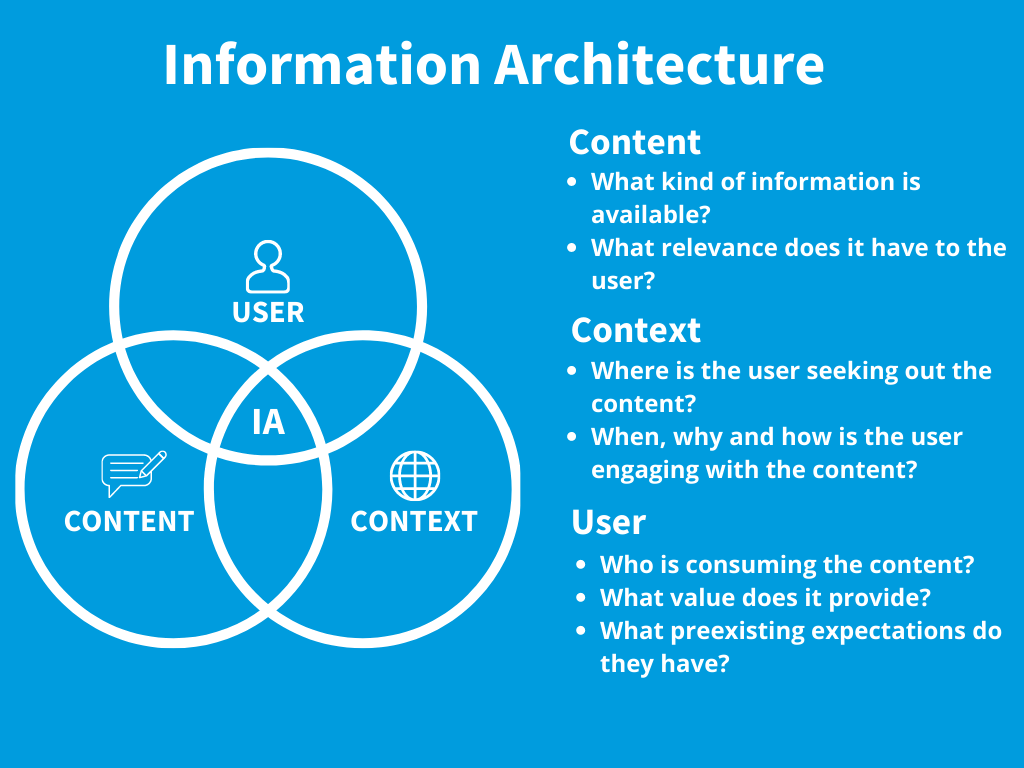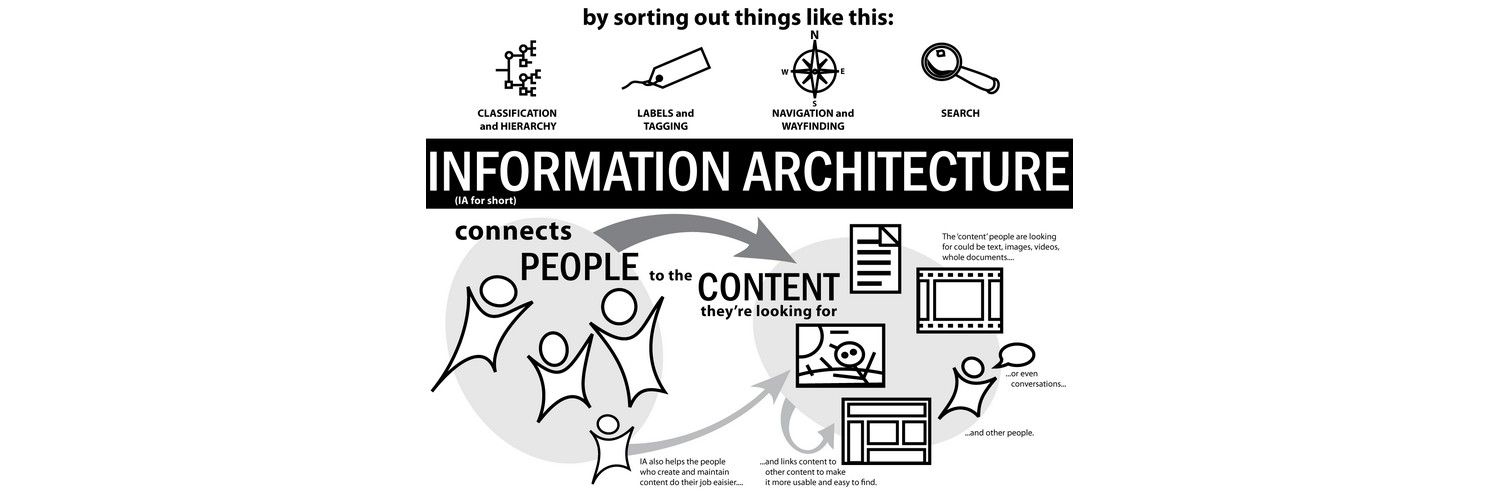1. Introduction: Understanding the significance of information architecture in UX design
In the digital age, user experience (UX) has become a crucial factor in the success of any website or application. As a result, the field of UX design has evolved to focus on creating intuitive, user-friendly interfaces that enhance the overall experience. One integral aspect of this process is information architecture, which involves organizing and structuring information in a way that facilitates easy navigation and seamless communication between the user and the interface. In this blog post, we will explore the power of information architecture in unleashing the true potential of UX, and how it can lead to a better user experience (UX), improved communication, and ultimately, a more successful product.
2. The impact of effective information architecture on user experience
Effective information architecture has a significant impact on the user experience. When information is organized logically and intuitively, users can easily navigate through a website or application, finding the desired information quickly and effortlessly. This not only improves user satisfaction but also reduces frustration and increases user engagement.
Furthermore, a well-structured information architecture allows for effective communication between the user and the interface. It ensures that the right information is presented at the right time and in the right context, enhancing usability and clarity. This leads to a smoother and more seamless user experience, making users more likely to continue using the product and achieving their goals.
In summary, information architecture plays a crucial role in unlocking the true potential of UX. By organizing and structuring information effectively, UX designers can create user-friendly interfaces that enhance usability, improve communication, and ultimately create a more successful product.
3. Key principles of information architecture
To fully harness the power of information architecture and create exceptional user experiences, it is essential to understand and implement key principles. These principles serve as guiding lights that direct the organization and structuring of information. Let's explore some of the most fundamental principles:
a) Clarity and simplicity: Aim for clear and concise labeling, avoid jargon, and use familiar terminology to help users quickly understand and navigate through the interface.
b) Consistency: Maintain consistent navigation patterns and design elements throughout the website or application to provide a familiar and cohesive experience for users.
c) Hierarchical structure: Establish a logical hierarchy to arrange information based on importance and relevance, ensuring that users can easily navigate from broad categories to specific details.
d) User-centric design: Focus on creating an information architecture that meets the needs and expectations of your target audience, prioritizing their goals and tasks.
e) Flexibility and scalability: Design an information architecture that can adapt to future changes and accommodate the growth of your product, allowing for easy updates and additions.
By incorporating these key principles into your information architecture, you can create a solid foundation for a user-centric and intuitive user experience, unlocking the true potential of UX design. In the next section, we will delve deeper into the practical application of these principles and provide tips for implementing them effectively. Stay tuned!
4. Implementing information architecture: Best practices for optimizing UX
Now that we have covered the fundamental principles of information architecture, it's time to delve into how to apply them effectively. By following these best practices, you can optimize the user experience and maximize the potential of your information architecture:
a) Conduct user research: Before designing your information architecture, gain insights into your target audience's needs, preferences, and behavior. This will help you make informed decisions about how to structure and present information.
b) Utilize user flows: User flows map out the paths users are likely to take when interacting with your product. By identifying their goals and tasks, you can streamline the navigation and provide a seamless experience.
c) Consider search functionality: Incorporate a search feature that allows users to find specific information quickly. Optimize the search function by ensuring it delivers relevant results and provides filters or sorting options for more refined searches.
d) Test and iterate: Regularly test your information architecture with users to uncover any usability issues or areas for improvement. Use their feedback to refine the structure and enhance the overall user experience.
e) Collaborate with stakeholders: Involve key stakeholders, such as designers, developers, and content specialists, in the information architecture design process. Their expertise and perspectives can contribute to a more holistic and successful outcome.
By following these best practices, you can optimize your information architecture and ensure a seamless and intuitive user experience. In the next section, we will explore the role of content strategy in information architecture and how to create effective content hierarchies. Don't miss it!
5. The role of information architecture in enhancing website navigation
One crucial aspect of information architecture is its impact on website navigation. A well-designed information architecture can significantly enhance the user's ability to navigate a website, ensuring they find what they're looking for quickly and easily. Here are some key considerations for optimizing website navigation through effective information architecture:
a) Clear and intuitive menu structure: A logical and well-organized menu structure is essential for guiding users through the website. Utilize clear labels and arrange menu items in a hierarchical manner that reflects the content's relationships.
b) Consistent navigation elements: Maintain consistency in the placement and appearance of navigation elements throughout the website. This consistency helps users develop a mental model of the website's layout and find their way around effortlessly.
c) Breadcrumbs: Breadcrumbs provide users with clear indications of their current location within the website's structure. This feature allows them to trace their steps back or navigate to higher levels of the site hierarchy easily.
d) Sitemaps: Including a sitemap provides users with a comprehensive overview of the website's structure and helps them understand how different sections relate to one another. This feature can be particularly useful for websites with a large volume of content.
e) Contextual navigation: Consider implementing contextual navigation elements, such as related links or suggested next steps, within your content. These features can assist users in navigating to relevant and related information without having to return to the main menu.
By incorporating these navigation-enhancing techniques into your information architecture, you can ensure a seamless and intuitive user experience. In the next section, we will explore the role of content strategy in information architecture and how to create effective content hierarchies. Stay tuned!
6. Utilizing information architecture to improve content organization and findability
One of the key benefits of information architecture is its ability to improve content organization and findability. When users visit a website, they typically have a specific goal in mind, whether it's finding information, making a purchase, or completing a task. A well-designed information architecture ensures that users can easily locate the content they need, making their experience more efficient and enjoyable.
To achieve this, it's essential to create effective content hierarchies. A content hierarchy is the way in which information is organized and categorized on a website. It helps users understand the relationships between different pieces of content and how they fit into the overall structure.
When developing your content hierarchy, consider the following:
1. Grouping similar content: Organize related content into categories or topics to make it easier for users to navigate and find what they're looking for. This can be done through clear and descriptive headings, subheadings, and labels.
2. Prioritizing content: Identify the most important and relevant content and ensure it's highlighted and easily accessible to users. This can be achieved through strategic placement on the website or using visual cues such as color or size.
3. Using metadata and tags: Incorporate metadata and tags to provide additional context and improve searchability. Tags can serve as keywords or labels that users can use to filter and refine their search results.
By implementing a well-thought-out content hierarchy, you can improve the overall findability of your content, making it easier for users to locate the information they need quickly and efficiently. In the next section, we'll discuss the importance of user research in information architecture and how it can inform your design decisions. Stay tuned!
7. The future of information architecture in UX design
As technology continues to evolve, so does the role of information architecture in UX design. With the rise of voice-activated devices, virtual reality, and artificial intelligence, the way we access and consume information is rapidly changing. This presents both exciting opportunities and unique challenges for information architects.
In the future, we can expect to see more emphasis on personalized experiences and adaptive content. Information architects will need to consider how to deliver the right content to the right user at the right time. This requires a deep understanding of user needs and behaviors, as well as the ability to leverage data and analytics to create tailored experiences.
Additionally, the importance of mobile optimization cannot be overstated. With more users accessing the web through mobile devices, information architects must ensure that the content hierarchy is optimized for smaller screens and touch-based interactions.
The future of information architecture in UX design is bright, but it also requires adaptability and a willingness to embrace new technologies and trends. By staying abreast of industry developments and constantly seeking out opportunities for innovation, information architects can continue to unleash the true potential of UX. Stay tuned for the next section where we explore the role of collaboration in information architecture.
8. Conclusion: Unleashing the true potential of UX through effective information architecture
In conclusion, effective information architecture plays a crucial role in unleashing the true potential of user experience (UX). As technology advances and user expectations evolve, information architects must adapt and embrace new strategies to deliver personalized, adaptive, and mobile-optimized experiences.
To succeed in this ever-changing landscape, information architects must stay updated on industry developments, leverage data and analytics to understand user needs and behaviors, and embrace new technologies and trends. Additionally, collaboration with other stakeholders in the design process is essential to ensure a seamless user experience.
By focusing on these key areas, information architects can create intuitive and user-centric digital solutions that not only meet user expectations but also exceed them. In doing so, they will empower users to access and consume information effortlessly, paving the way for a future where UX is truly impactful in enhancing people's lives.
References:
1. Images: https://public-images.interaction-design.org/tags/xGoEhSkhNp9gAlUuuSIfQqavKYnYHueuTfUtwWxe.png
2. Image2: https://public-images.interaction-design.org/literature/articles/heros/56e01a004f214.jpg


